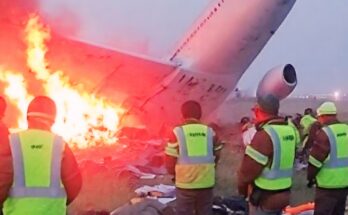
The F-16 Fighting Falcon is one of the most recognizable and widely used fighter aircraft in modern history. Developed by General Dynamics in the 1970s, and now produced by Lockheed Martin, the F-16 was designed as a lightweight, versatile, and affordable multirole fighter. Over the decades, it has proven itself in the air forces of more than two dozen countries, earning a reputation for agility, reliability, and combat effectiveness.
At its core, the F-16 was built around the concept of energy maneuverability. Its frameless bubble canopy gives pilots an exceptional field of view, and its side-mounted control stick allows for precise handling, especially under high-G conditions. With a powerful single engine and relaxed static stability design, the aircraft is highly maneuverable, capable of tight turns and rapid changes in direction that give it an edge in dogfighting. Fly-by-wire controls help stabilize the jet, making it both responsive and easier to operate despite its aerodynamic instability.
In terms of performance, the F-16 can reach speeds exceeding Mach 2 at altitude. Its combat radius of about 340 miles allows it to strike deep into enemy territory while maintaining the ability to return safely. The jet can be armed with a wide range of weapons, from AIM-9 Sidewinders and AIM-120 AMRAAMs for air-to-air combat to precision-guided bombs and air-to-ground missiles for strike missions. The built-in M61 Vulcan cannon provides additional close-range firepower. This adaptability is one reason the F-16 is considered a true multirole platform.
Another key strength of the Fighting Falcon is its affordability compared to heavier aircraft like the F-15 or the Eurofighter Typhoon. Its relatively low production and maintenance costs have made it attractive to allied nations that want a capable yet cost-effective fighter. More than 4,600 F-16s have been produced since the first flight in 1974, and the aircraft remains in service with air forces around the world, including the United States, Israel, Turkey, Egypt, and South Korea.
Beyond its technical specifications, the F-16 has an impressive combat record. It has seen action in conflicts from the Middle East to the Balkans, often demonstrating its effectiveness in both air superiority and ground attack roles. In Israeli service, the F-16 has been particularly notable, playing a central role in missions such as the 1981 strike on Iraq’s Osirak nuclear reactor. Its reliability and versatility have ensured that even decades after its introduction, it remains a valuable asset in modern air combat.
Although newer aircraft like the F-35 Lightning II are gradually taking over frontline roles, the F-16 continues to be upgraded with advanced avionics, radar systems, and weapon integrations. The latest variants, such as the F-16V “Viper,” feature modern electronic warfare capabilities and enhanced cockpit displays, ensuring that the Fighting Falcon remains competitive in today’s technologically demanding battlefields.
The F-16 Fighting Falcon is more than just a fighter jet—it represents a balance of speed, maneuverability, and affordability that has stood the test of time. With thousands still flying and upgrades keeping it relevant, the aircraft remains one of the most successful fighters ever built, securing its place in aviation history.


